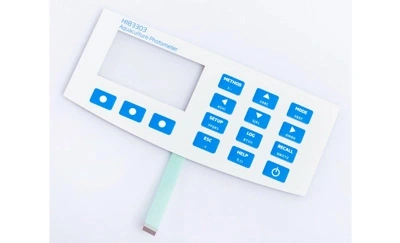
In the intricate world of cellular biology, the transition from being a plasma membrane protein to becoming a secretory protein is a fascinating process. This transformation plays a crucial role in various cellular functions, including signaling, immune responses, and maintaining cellular homeostasis. In this article, we will delve into the intricacies of this cellular transition and explore the mechanisms that govern it.
Before we dive into the journey of switching to secretory proteins, let's first understand what plasma membrane proteins are and their significance.
Plasma membrane proteins are integral components of the cell membrane, also known as the lipid bilayer. They serve as gatekeepers, controlling the entry and exit of molecules into and out of the cell. These proteins play a pivotal role in cellular communication, adhesion, and signal transduction.
Cell Signaling: Plasma membrane proteins act as receptors, receiving signals from the external environment and transmitting them to the cell's interior.
Transport: They facilitate the transport of ions, nutrients, and other essential molecules across the cell membrane.
Cell Adhesion: These proteins are involved in cell-to-cell adhesion, critical for tissue and organ formation.

Now that we have a fundamental understanding of plasma membrane proteins, let's explore the intriguing process of switching from being a plasma membrane protein to a secretory one.
The secretory pathway is a highly regulated cellular process responsible for the synthesis and secretion of proteins. This pathway involves several distinct organelles, including the endoplasmic reticulum (ER), Golgi apparatus, and secretory vesicles.
Protein Synthesis: The journey begins in the endoplasmic reticulum, where the protein is synthesized. This newly formed protein is known as a pre-protein.
Translocation: The pre-protein is then translocated into the lumen of the endoplasmic reticulum, where it undergoes various modifications, including signal peptide cleavage.
Golgi Apparatus: The modified protein moves to the Golgi apparatus, where it undergoes further processing, such as glycosylation.
Secretory Vesicles: After being processed in the Golgi apparatus, the protein is packaged into secretory vesicles.
Exocytosis: Finally, these vesicles fuse with the plasma membrane, releasing their contents into the extracellular space. This marks the protein's transition from being a plasma membrane protein to a secretory one.
Several factors can influence the decision of a protein to switch from being a plasma membrane protein to a secretory one. These factors include genetic determinants, cellular signals, and environmental cues.
Genetic Determinants
The protein's genetic code contains information that determines its fate within the cell. Signal peptides, for instance, are encoded in the protein's DNA sequence and play a critical role in directing it towards the secretory pathway.
Cellular Signals
Cellular signals can trigger the release of certain proteins from the plasma membrane. These signals can be induced by hormones, growth factors, or cellular stress responses.
Environmental Cues
Changes in the cellular microenvironment can also influence the transition. For example, conditions like hypoxia or nutrient deprivation may prompt cells to secrete specific proteins for survival.
The transition from being a plasma membrane protein to becoming secretory is a complex and highly regulated process that is essential for cellular function. Understanding the mechanisms behind this transition provides valuable insights into the functioning of cells and their adaptation to changing environments.
While exploring the fascinating world of cellular biology, are you also in search of high-quality and reliable custom membrane switches and membrane switch components? Niceone-tech is your trusted membrane switches supplier! We specialize in wholesale and custom services for membrane switches, offering innovative solutions tailored to your unique needs. Whether you're an industry professional or a business seeking cutting-edge components, Niceone-tech delivers precision, durability, and exceptional performance. Ready to elevate your projects? Contact us today and let us help you find the perfect solution for your requirements. Your success is just a click away!
What are secretory proteins used for in the body?
Secretory proteins play various roles, including enzymes for digestion, antibodies for immune responses, and hormones for signaling.
Can all proteins switch from being plasma membrane proteins to secretory ones?
No, not all proteins have the capacity to undergo this transition. It depends on their genetic coding and cellular signals.
What happens if the secretory pathway malfunctions?
Malfunctions in the secretory pathway can lead to various diseases, including neurodegenerative disorders and metabolic diseases.
Are there any drugs that can modulate the secretory pathway?
Yes, some drugs can influence the secretory pathway and are used in the treatment of certain medical conditions.
Is the secretory pathway the same in all cell types?
While the basic principles of the secretory pathway are conserved, there can be variations in its regulation and specific components in different cell types.